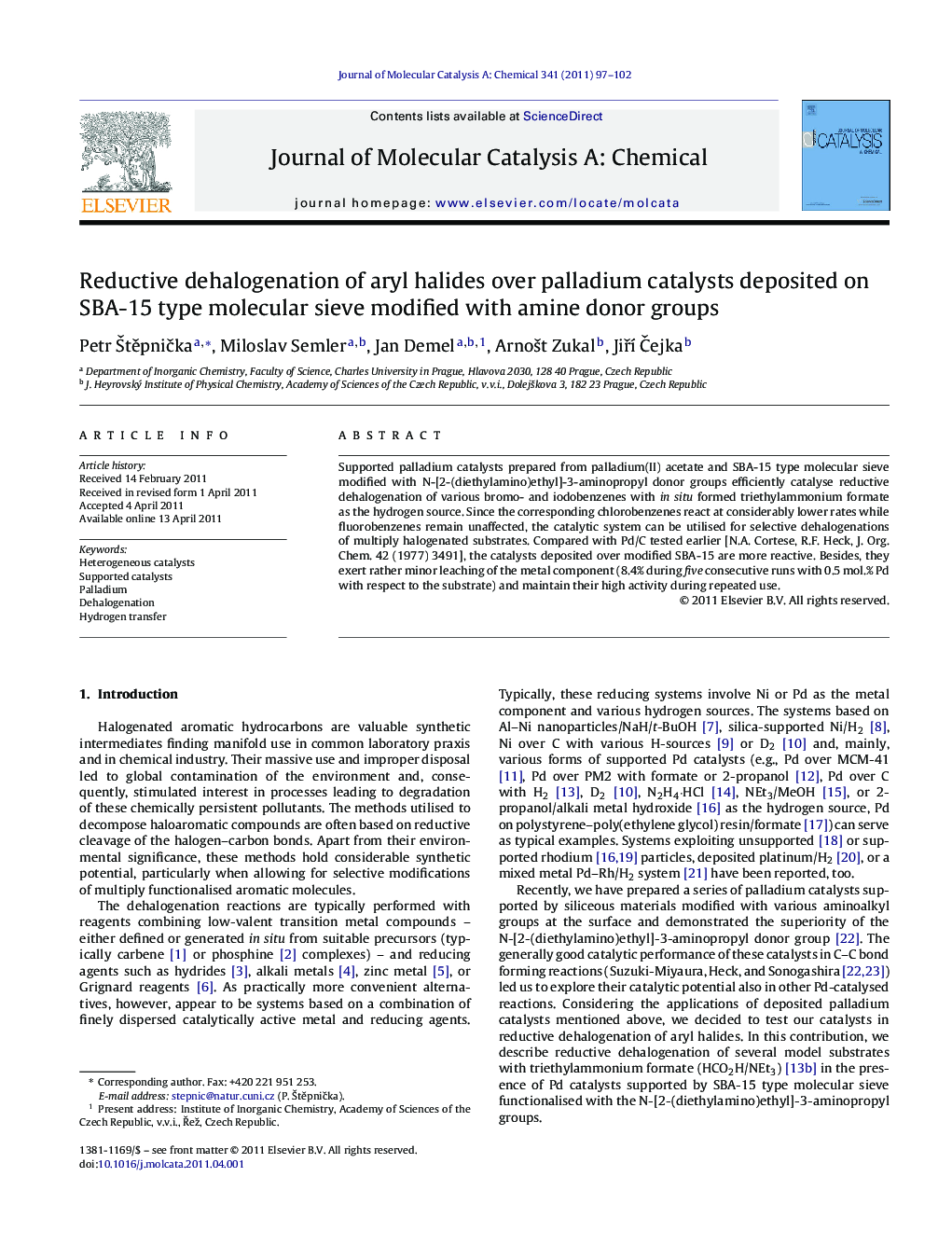| Article ID | Journal | Published Year | Pages | File Type |
|---|---|---|---|---|
| 66625 | Journal of Molecular Catalysis A: Chemical | 2011 | 6 Pages |
Supported palladium catalysts prepared from palladium(II) acetate and SBA-15 type molecular sieve modified with N-[2-(diethylamino)ethyl]-3-aminopropyl donor groups efficiently catalyse reductive dehalogenation of various bromo- and iodobenzenes with in situ formed triethylammonium formate as the hydrogen source. Since the corresponding chlorobenzenes react at considerably lower rates while fluorobenzenes remain unaffected, the catalytic system can be utilised for selective dehalogenations of multiply halogenated substrates. Compared with Pd/C tested earlier [N.A. Cortese, R.F. Heck, J. Org. Chem. 42 (1977) 3491], the catalysts deposited over modified SBA-15 are more reactive. Besides, they exert rather minor leaching of the metal component (8.4% during five consecutive runs with 0.5 mol.% Pd with respect to the substrate) and maintain their high activity during repeated use.
Graphical abstractBromo- and iodobenzenes can be efficiently reductively dehalogenated with triethylammonium formate in the presence of a Pd catalyst deposited on SBA-15 type molecular sieve bearing N-[2-(diethylamino)ethyl]-3-aminopropyl donor groups at the surface. The corresponding chlorobenzenes are dehalogenated with at considerably slower rates while flurobenzenes do not react. This allows for selective dehalogenations of multiply halogenated substrates.Figure optionsDownload full-size imageDownload high-quality image (118 K)Download as PowerPoint slideHighlights► Pd catalysts deposited on SBA-15 type support modified with amine groups. ► Catalysts for reductive dehalogenation of haloarenes with formate as the H-source. ► Recyclable and efficient catalysts allowing for selective halogen removal.
